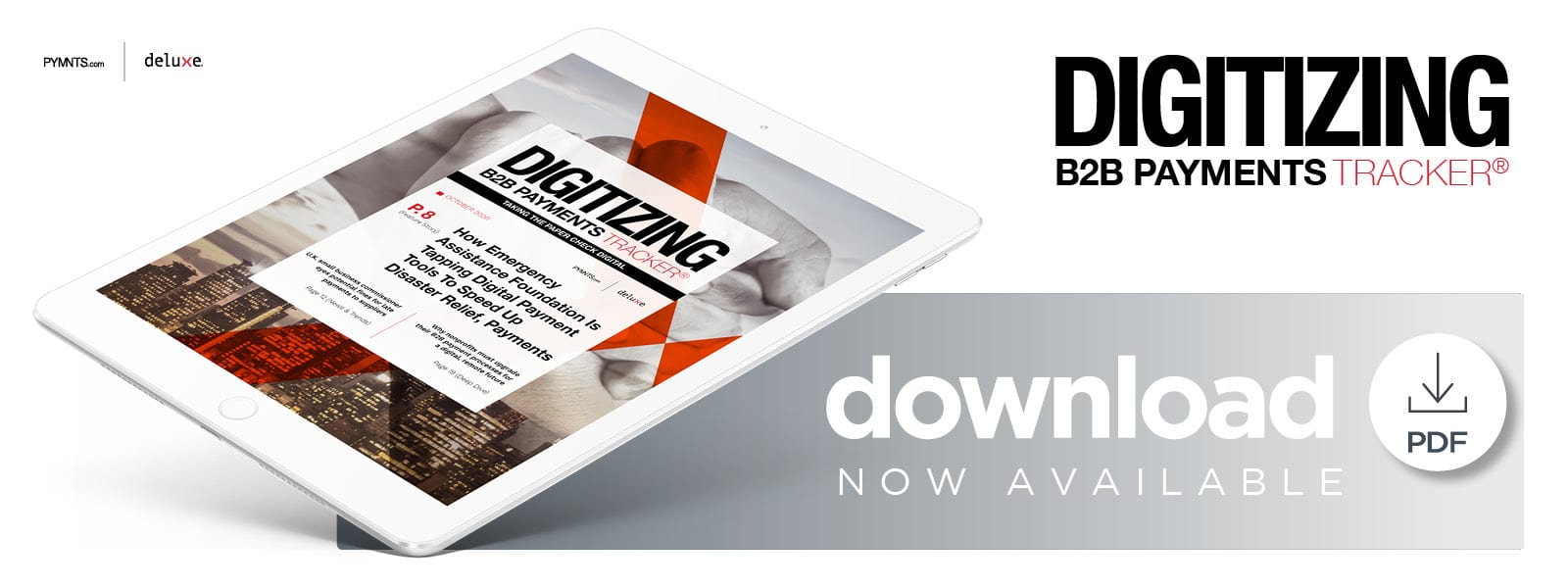Deep Dive: How The Pandemic Is Pushing Nonprofits To Accelerate B2B Digitization

Nonprofits’ unique revenue models are causing them to struggle more than most other businesses during the ongoing COVID-19 pandemic. One recent study found that 73 percent of these entities reported revenue dips during the first half of 2020, and these losses are being felt on multiple levels. Nonprofits have had to manage shifts to remote work, determine how to receive digital funding on a greater scale and evaluate the ways they make payments. Many are working with fewer financial resources to boot, restricting their ability to navigate these changes.
Many businesses are therefore considering digitizing their B2B payment operations to gain more detailed insights into their payments’ statuses and help their employees settle into their remote roles. These considerations do not mean that these entities are ready to completely cut ties with the payment methods they have utilized for years, however. Paper checks are still thriving in the B2B payments space, and companies spend approximately $9 billion a year to process these payments. Many businesses — including nonprofits — still find paper checks comfortable and familiar, and they are seeking out digital solutions that can supplement their existing payment flows while eliminating some of the friction points typically associated with paper-based methods.
The following Deep Dive assesses the pain points that nonprofits are facing as they attempt to keep their operations afloat during the pandemic. It also examines how today’s reality is leading many to consider digitizing certain parts of their AP processes while enabling business partners to continue leveraging paper checks and details what these shifts mean for the future of B2B payments in the nonprofit ecosystem.
Familiar payments face financial friction
Checks still provide clear benefits for many businesses, including nonprofits. Most companies accept them and 42 percent of firms still use the method to pay their suppliers. The pandemic has thrown the B2B payments world for a loop, however, and nonprofits are among the entities that now have remote workforces. This has left many scrambling to find ways to incorporate paper checks into digital payments frameworks.
Nonprofits have had to weather many of the same initial challenges as other businesses, including steep drop-offs in demand. Sixty-one percent of nonprofit organizations in one recent survey noted that they have witnessed dips in the number of consumers tapping into their services. These changes lead to a vicious circle, however, as nonprofits that see reduced demand then struggle to offer the same level of service for their remaining consumers.
Smaller organizations are bearing the brunt of this pandemic-related fallout, with one out of every three small nonprofits — those with annual budgets of less than $1 million — facing operating budget deficits of more than 30 percent. These firms are also four times likelier to confront “severe financial risks” than their larger counterparts. This puts them at a similar risk of closure as other SMBs, and 100,000 of them in the U.S. have permanently shuttered their doors since the health crisis began.
Nonprofits are thus feeling intense pressure to revamp even standard operations to help cut costs and ensure that their payments are made in a timely manner. Digitizing B2B payments is not necessarily a novel concept to most of these organizations as many were making digital strides well before the pandemic’s onset, but progress has been slow. Just 38 percent were using electronic payments in any capacity before the health crisis began, according to one July study, while 31 percent of nonprofits claimed they were in the process of implementing such methods.
The financial frictions nonprofits are experiencing have also failed to dampen the robust role that paper checks and invoices play in their B2B payments operations. As much as $12.5 trillion in checks are still written annually, and SMBs and other small organizations still find checks comfortable because they either cannot afford the initial costs required to implement digital systems or they are more familiar with the processes attached to them. Nonprofits and other businesses that need additional digital support must therefore look to more creative solutions.
Old payments, new tricks
One potential solution that could allow nonprofits to reap the distinct benefits of digital and check-based payments is to eliminate paper-based and manual processes in other aspects of their B2B transactions. Allowing these organizations to avoid paper invoices and manual data input could save them a significant amount of time, even if their partners or vendors are still expecting paper checks at the end of each transaction. Approximately 12 million invoices — 40 percent of those received by U.S. businesses — were still sent via paper-based methods as of 2018, and eliminating firms’ reliance on such forms could go a long way.
Providing a mix of old and new payments could also help nonprofits further digitize their processes and enable them to add speed without alienating their partners. Integrating support for payment methods such as electronic checks or instant payments, for example, could offer digital benefits to partnering firms without generating undue costs for either party.
It is clear that digitization is becoming a key consideration for nonprofits moving to upgrade their B2B payment processes. It is unlikely that these organizations’ employees will return to their prepandemic working models once the crisis ends, which means they — along with the rest of the business world — must adapt operations to the new normal.

